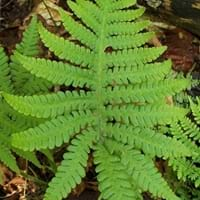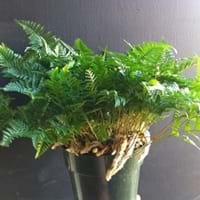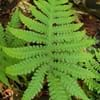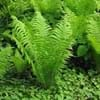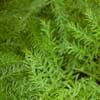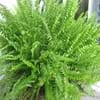Life Span
Perennial
Perennial
Origin
Europe, Eastern Europe, Northern Europe, Western Europe, Russia, Siberia, Asia, Central Asia, Eastern Asia, Western Asia, Nepal, China, Korea
Mediterranean, Northern Africa, Southern Asia, Southeastern Asia, China, Japan, Melanesia, Micronesia, Polynesia, Australia
Types
Not Available
not available
Habitat
meadows, Shady Edge, Woodland Garden Dappled Shade
Coastal Regions
USDA Hardiness Zone
2-8
9-11
Sunset Zone
A2, 1a, 1b, 2a, 2b, 3a, 3b, 4, 5, 6, 7, 8, 9, 14, 15, 16, 17
H1, H2, 17, 23, 24
Habit
Clump-Forming
Spreading
Flower Color
Not Available
Non Flowering Plant
Flower Color Modifier
Bicolor
Bicolor
Fruit Color
Non Fruiting Plant
Non Fruiting Plant
Leaf Color in Spring
Light Green, Yellow green
Green, Dark Green
Leaf Color in Summer
Green, Yellow green
Green, Dark Green
Leaf Color in Fall
Green, Yellow green
Green, Dark Green
Leaf Color in Winter
Not Available
Green, Dark Green
Leaf Shape
Pinnate
Oaklike
Plant Season
Spring, Summer, Fall
Spring, Summer, Fall, Winter
Sunlight
Full Sun
Full Shade, Partial shade
Growth Rate
Medium
Medium
Type of Soil
Clay, Loam
Loam, Sand
The pH of Soil
Acidic
Acidic, Neutral, Alkaline
Soil Drainage
Average
Well drained
Bloom Time
Not Available
Mid Spring
Tolerances
Wet Site
Not Available
Where to Plant?
Ground
Container, Ground, Pot
How to Plant?
Divison, Spores
Divison
Plant Maintenance
Medium
Low
Watering Requirements
Average Water Needs, Medium
Keep the ground moist but not water-logged
In Summer
Lots of watering
Lots of watering
In Spring
Moderate
Ample Water
In Winter
Average Water
Keep Slightly Dry
Soil pH
Acidic
Acidic, Neutral, Alkaline
Soil Type
Clay, Loam
Loam, Sand
Soil Drainage Capacity
Average
Well drained
Sun Exposure
Full Shade, Partial shade
Full Shade, Partial shade
Pruning
Remove damaged leaves, Remove dead branches, Remove dead leaves, Remove dead or diseased plant parts
Prune if you want to improve plant shape
Fertilizers
All-Purpose Liquid Fertilizer
All-Purpose Liquid Fertilizer, Fertilizer every month during spring, organic fertlizers
Pests and Diseases
Red blotch
Mealybugs, Scale
Plant Tolerance
Drought
Drought
Flower Petal Number
Single
Single
Foliage Texture
Fine
Fine
Foliage Sheen
Matte
Glossy
Attracts
Insects
Not Available
Allergy
Carcinogenic, Stomach cancers
Not Available
Aesthetic Uses
Not Used For Aesthetic Purpose
Decorating walls, Ground Cover, Showy Purposes, Used for decorating walls, fences, gates, hedges, etc.
Beauty Benefits
Not Available
No Beauty Benefits
Environmental Uses
Air purification
Provides ground cover
Medicinal Uses
Anthelmintic, Antiemetic, Antiseptic, Diuretic, Poultice, Refrigerant, Tonic
Absesses, Insanity, Wounds
Part of Plant Used
Leaves, Root
Leaves
Other Uses
Adhesive, Basketary, Used as a dye, Used for making soaps, Used in biomass
Employed in herbal medicine, Used as Ornamental plant
Used As Indoor Plant
No
Yes
Used As Outdoor Plant
Yes
Yes
Garden Design
Groundcover, Mixed Border, Rock Garden, Wall
Container, Groundcover, Hanging Basket, Houseplant, Rock Garden, Wall, Tropical
Botanical Name
DRYOPTERIS carthusiana
DAVALLIA
Common Name
Leatherwood Fern
Rabbit's Foot Fern, deersfoot fern, shinobu fern, ball fern, hare's foot fern
In Hindi
Leatherwood Fern
Rabbit's Foot Fern
In German
Leatherwood Fern
Hasenpfote Fern
In French
Leatherwood Fern
Pied Fern Rabbit
In Spanish
Leatherwood Fern
Pie de conejo helecho
In Greek
Leatherwood Fern
Foot Fern κουνελιού
In Portuguese
Leatherwood Fern
Pé Fern do Coelho
In Polish
Leatherwood Fern
Królika Foot Fern
In Latin
Leatherwood Fern
Lepus pedem Fern
Phylum
Pteridophyta
Euphyllophytina
Class
Filicopsida
Pteridopsida
Order
Polypodiales
Polypodiales
Family
Dennstaedtiaceae
Davalliaceae
Genus
Pteridium Gleditsch
Davallia
Clade
Not Available
Not Available
Tribe
Not Available
Not Available
Subfamily
Not Available
Not Available
Number of Species
Not Available
Season and Care of Leatherwood Fern and Rabbits Foot Fern
Season and care of Leatherwood Fern and Rabbits Foot Fern is important to know. While considering everything about Leatherwood Fern and Rabbits Foot Fern Care, growing season is an essential factor. Leatherwood Fern season is Spring, Summer and Fall and Rabbits Foot Fern season is Spring, Summer and Fall. The type of soil for Leatherwood Fern is Clay, Loam and for Rabbits Foot Fern is Loam, Sand while the PH of soil for Leatherwood Fern is Acidic and for Rabbits Foot Fern is Acidic, Neutral, Alkaline.
Leatherwood Fern and Rabbits Foot Fern Physical Information
Leatherwood Fern and Rabbits Foot Fern physical information is very important for comparison. Leatherwood Fern height is 40.60 cm and width 30.50 cm whereas Rabbits Foot Fern height is 30.00 cm and width 30.00 cm. The color specification of Leatherwood Fern and Rabbits Foot Fern are as follows:
Leatherwood Fern flower color: Not Available
Leatherwood Fern leaf color: Light Green and Yellow green
Rabbits Foot Fern flower color: Non Flowering Plant
- Rabbits Foot Fern leaf color: Green and Dark Green
Care of Leatherwood Fern and Rabbits Foot Fern
Care of Leatherwood Fern and Rabbits Foot Fern include pruning, fertilizers, watering etc. Leatherwood Fern pruning is done Remove damaged leaves, Remove dead branches, Remove dead leaves and Remove dead or diseased plant parts and Rabbits Foot Fern pruning is done Prune if you want to improve plant shape. In summer Leatherwood Fern needs Lots of watering and in winter, it needs Average Water. Whereas, in summer Rabbits Foot Fern needs Lots of watering and in winter, it needs Keep Slightly Dry.
